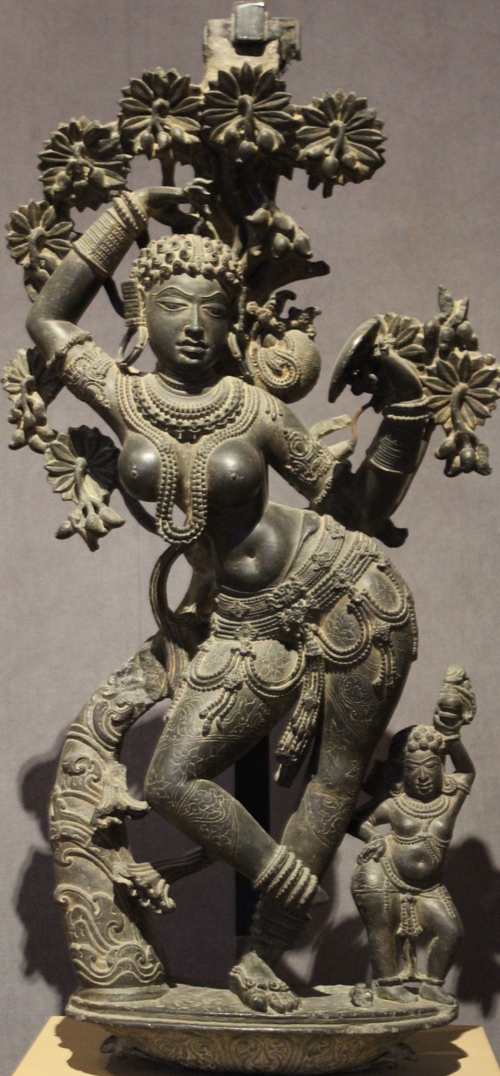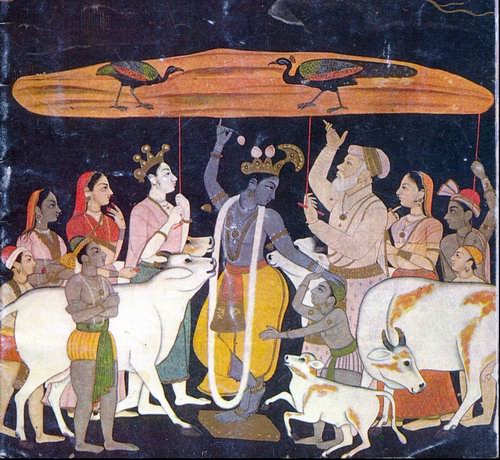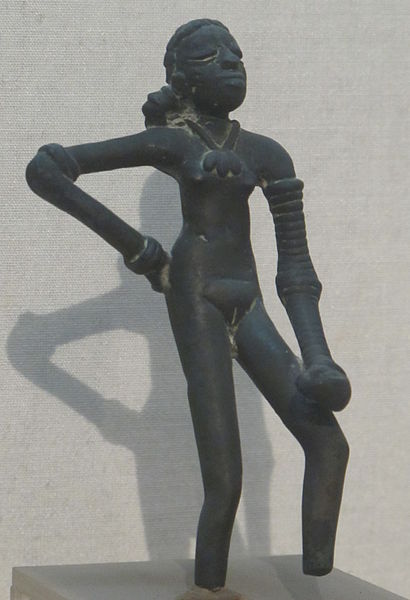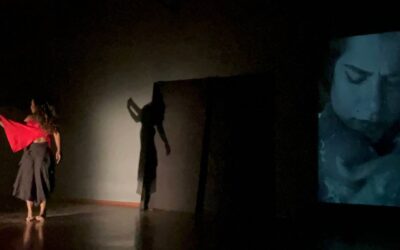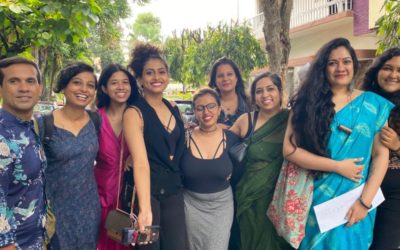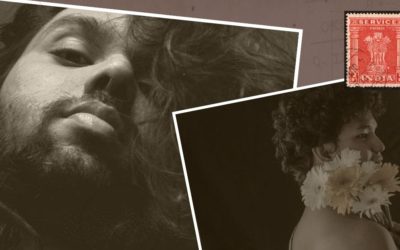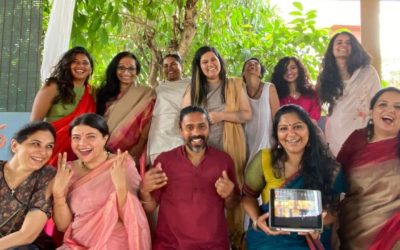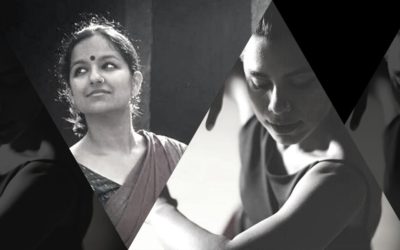It was the summer of 2017. Five years into my Jazz dance training – a dance form that had shaped, moulded and transformed my body and the way I moved. It was an annual dance-off and I was performing a lyrical Jazz piece. Before leaping into the routine, I stood in the ‘Pose’– a pose that had become my moment before starting any routine. It was like bringing the world to a standstill.
Standing with my weight on the left leg, dropping the right hip and bending the left knee. The base of my left palm rested on the back of the left hip. My right leg extended sideways, toes pointed, and my right arm stretched along the right leg with a drop in the right shoulder. With my chin up, I looked straight at the audience. Maybe not the audience, but I looked all the way to the end of the room. Something about this pose brought about a sense of owning my body, my persona, my expression, my sensuality, my whole being. The drop of the hip made the bottom vertebrae curve, and appear out of alignment from the rest of my spine. A deviance, defiance of the normal straight stance. A resistance, a revolt of sorts.
Many years since, I have been examining the Pose and thinking about how it became an expression of my sexuality. From where and from whom was I drawing this meaning? Is it a personal symbol or do other dancers like me experience this defiance and this way of owning and inhabiting the body, and all that it holds? Does this symbol have an archetypal history? What is the narrative behind the Pose?
While reading Devdutt Patnaik’s Shikhandi: And Other Tales They Don’t Tell You (2014), a collection of Hindu mythological queer stories from the Puranas, the tale of Mohini, the enchantress, piqued my curiosity and wonder. The myth is about how Vishnu transformed into Mohini to help Shiva from Bhasma-asura, a demon. Bhasma-asura had won Shiva’s blessing with his devotion and was granted the power to burn down to ashes anyone whose head he placed his hands on. He tries to use this power on Shiva, and out of fear Shiva flees and approaches Vishnu for help. Vishnu transforms into the enchanting Mohini and appears in front of Bhasma-asura. On seeing her, Bhasma-asura is filled with lust and he asks her to marry him. Mohini says that she would marry him only if Bhasma-asura would dance like her. He agrees and begins to mirror Mohini’s moves. During this seductive play Mohini touches her head with her palm, and Bhasma-asura, forgetting the consequence, does the same and is reduced to ashes.
One of the inferences I draw from this myth is the power dynamic that exists between the performers and the gaze directed toward them. Bhasma-asura, having received Shiva’s blessing, was probably the most powerful demon at that time. So powerful that even Shiva had to flee from him. And only Vishnu, who transforms into Mohini could defeat this demon. Vishnu, in the form of Mohini, beguiles Bhasma-asura and cleverly uses the power she holds over him to destroy him. So fascinated was I with Mohini, that I ran a quick search on Google for images of paintings and sculptures of her. I came across this image and what do I see? The Pose! The dropped hip on one side, the dropped shoulders and the tilted head. There was a sense of familiarity that I found with this pose. The pose depicted here is seen in many ancient art depictions of female bodies. The pose is called the ‘Tribhanga’ or the equipoised stance bent in three places (knees, hips and neck & shoulders).
The Tribhanga also appears in Odissi dance, and is one of the five bhangas (stances/poses); Tribhanga and Abhanga being the most popular stances depicted in ancient Indian art forms. Not only does the pose appear on female bodies/feminine avatars of male gods, it is also used while depicting Krishna lifting Govardhan in the Tribhanga pose, and Natraj, the dancing Shiva, in the Atibhanga pose. We also know of the Dancing Girl of Mohenjo-daro in the Abhanga pose.
Image Credits
Tribhanga Pose, Dancing Girl, Krishna lifting Govardhan, Cover Image
Robin Raju is an Expressive Arts Therapy practitioner, exploring the intersection of arts and psychology. He has trained in the Western dance form of Jazz, is dabbling with contemporary and modern dance, and researching his own movement language. He is keenly interested in exploring vocabulary and symbols in movement arts.
This article was originally published in the March 17, 2023 edition of In Plainspeak, a digital magazine on sexuality in the Global South – More than a Striking Pose https://www.tarshi.net/inplainspeak/more-than-striking-a-pose/
Blog
Spiralling into Desire – Review
My first encounter with Spiralling Into Desire was its 2022 film release and screening. As an early student of Brinda and the daughter of her designer/publicist, I came in clueless, offering mere moral support. Today, two years later, I revel in the aftertaste of her...
Beannacht (Blessing)
Congratulations! My apologies I can't be with you all today in person, as I am outside Bangalore being with my family as our grandmother has passed on. Each of you is in my thoughts today. Congratulations to each of you for having embarked and initiated your journey...
Transpersonal Space and Trauma
The conversation explores the Transpersonal Space while working with Trauma and Mental Health. The panel, Brinda Jacob-Janvrin (Expressive Art Therapy and Authentic Movement), Laura Smith-Riva (Natural Dreamwork), Katia Verreault (Trauma and the Body) and Sukhvinder...
Narrative Therapy
In this conversation on Narrative Therapy, Christy and Raviraj explore the idea of What makes a story and its influence on how we perceive ourselves, others and the world around us. They share stories from their lived experience and work and illustrate the politics of...
Time of My Life & Train Song
The batch before this one did their last bit online. The batch after this one met once in-person for the experiential sessions. But this class of 2020-21 got sandwiched between the 2 lock downs and were our test tube babies - nothing short of a miracle. They truly...
Dance, self-exploration, love, desire
Dancer and Art Therapist, Brinda Sarah Jacob in conversation with Odissi Dancer, Meghna Das. From the Ampersand Series.Blog

